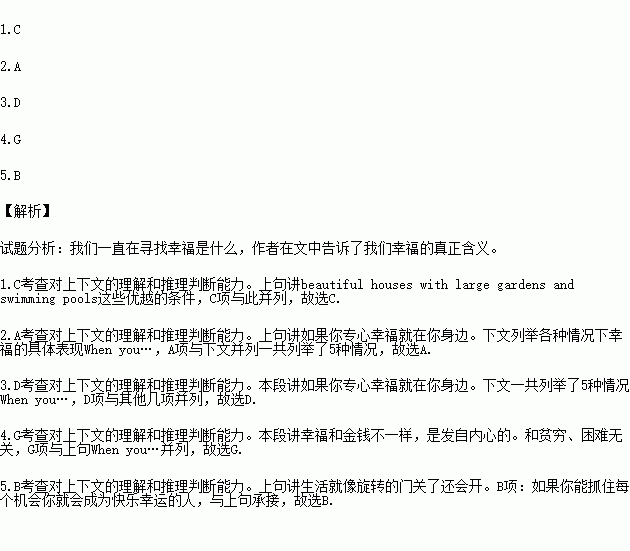题目内容
根据短文内容,在短文后的选项中选出能填入空白处的最佳选项。选项中有两项为多余选项。
Happiness is for everyone. You don’t need to care about those people who have beautiful houses with large gardens and swimming pools or 1. and so on. Why? Because those who have big houses may often feel lonely and those who have cars may want to walk on the country roads at their free time.
In fact, happiness is always around you if you put your heart into it. 2. _ When you study hard at your lessons, your parents are always taking good care of your life and your health. When you get success, your friends will say congratulations to you. When you do something wrong, people around you will help you to correct it. 3.__ All these are your happiness. If you notice a bit of them, you can see that happiness is always around you.
Happiness is not the same as money. It is a feeling of your heart. When you are poor, you can also say you are very happy, because you have something else that can’t be bought with money. 4._, because you have more chances to challenge yourself. So you cannot always say you are poor and you have bad luck. As the saying goes, life is like a revolving(旋转的)door. When it closes, it also opens. 5._.
A. When you are in trouble at school, your friends will help you
B. If you take every chance you get, you can be a happy and lucky person
C. those who have nice cars and a lot of money
D. And when you do something good to others, you will feel happy, too
E. those who have no houses
F. When you meet with difficulties, you can give them up and be happy
G. When you meet with difficulties, you can say loudly you are very happy


